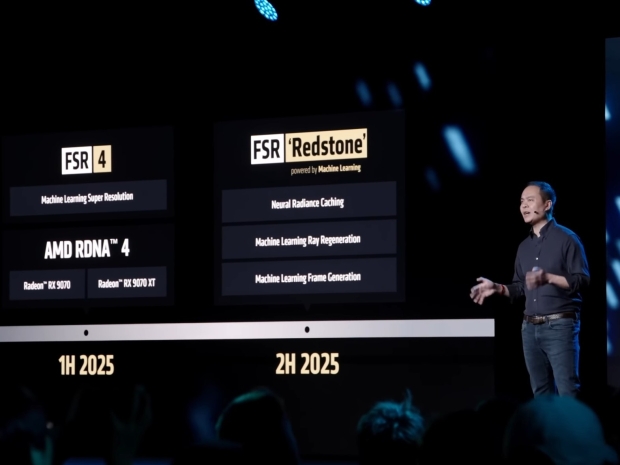FSR 4, showed up a few months ago alongside the Radeon RX 9070 and RX 9070 XT. While the supported game list is still slimmer than most indie bundles, AMD says it will hit 60 titles by 5 June when the Radeon RX 9060 XT hits shelves.
Now the company wants to bring some intelligence to the party. FSR Redstone will introduce three key features: neural radiance caching, machine learning ray regeneration, and machine learning frame generation. If that all sounds familiar, it’s because Nvidia has been doing variations of the same thing under the DLSS label for ages.
AMD says neural radiance caching will learn how light bounces around inside a game scene. Instead of calculating every ray on the fly, it stores light behaviour in a cache to be reused later, helping speed up path tracing without cooking your GPU. Ray regeneration is AMD’s answer to Nvidia’s ray reconstruction. It uses neural networks to redraw the bits of the image that the GPU either can’t trace properly or makes a total hash of. The result should be fewer fuzzy messes and more playable pixels.
Frame generation is the big one. AMD’s older approach didn’t bother with AI, trying to brute-force the process with clever engineering. Redstone changes that by injecting machine learning into the pipeline, predicting what a new frame should look like and sticking it in between real ones. It’s exactly what DLSS has been doing, only now AMD is finally playing the same game.
Of course, there’s a catch. FSR Redstone is being baked natively for RDNA 4 GPUs. AMD didn’t say whether earlier cards will get in on the fun, and since FSR 4 already snubbed RDNA 3 and earlier, it’s not looking good for those hoping to revive older kit.
No official release date has been mentioned yet, but AMD says FSR Redstone will land in the second half of the year. Whether it will do enough to put a dent in Nvidia’s upscaling dominance remains to be seen, but at least AMD now appears to be using tools rather than just shouting about open standards.




